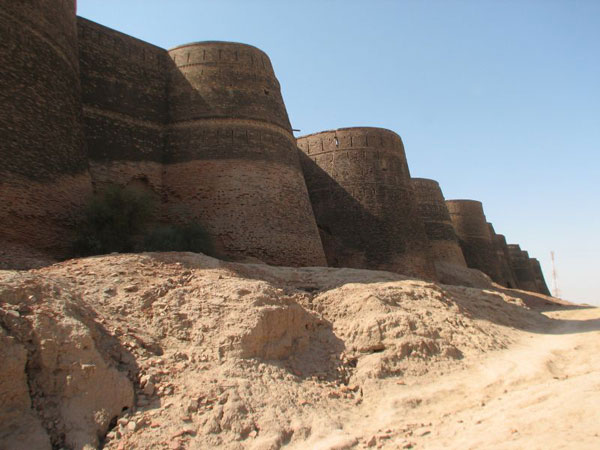Re-evaluating the environmental controls of the Harappan Civilization collapse using OSL dating of river palaeochannel sediments
The Saraswati River is hypothesized to have flowed in modern-day Pakistan and India during the mid-Holocene and a decline and ultimate cessation of flow in this system is suggested to have been influential in the decline/collapse of the Mature Harappan civilization. The Mature Harappan developed in the Indus Valley from ~2600 BC and is hypothesized to have collapsed suddenly around 1900 BC. The cause and timing of this collapse is the subject of much debate. Some authors1 link the collapse with a sharp decline in the intensity of the summer monsoon at 4.2 ka. Alternatively, the collapse may have been related to more local hydrological factors, specifically the decline and the ultimate loss of water from rivers flowing close to the major urban centres. Others2 have argued that there is no evidence of a collapse, rather a period of de-urbanisation driven by a factor yet to be determined. This debate remains unresolved as, although much research has been aimed at reconstructing and developing a chronology of monsoonal fluctuation and intensity in the region, a complete understanding of drainage evolution and fluvial dynamics of the Indus basin has yet to be achieved.

Optically stimulated luminescence (OSL) dating will be applied to key sites in Punjab, Pakistan, to constrain past periods of fluvial activity. Fluvial drainage patterns vary both spatially and temporally, and are responsive to climatic, tectonic and sedimentological controls and the OSL results will allow an understanding of the dynamics of this system during the Holocene. They will also permit for the first time, a comparison between the documented archaeological change of the Mature Harappan and absolute ages of previous river flow, which will help to demonstrate how influential fluvial regimes were to the survival of the Mature Harappan people.
Research at Aberdeen University will combine petrographic analysis, geochemical and isotopic methods to determine how the source region of the Saraswati has fluctuated over time, which will help indicate how influential varying catchments and controls, such as tectonic activity, may have been to the Saraswati system in the past.
- Staubwasser, M., Sirocko, F. Grootes, P.M. & Segl, M. (2003). Climate change the 4.2 ka BP termination of the Indus valley civilization and Holocene south Asian monsoon variability. Geophysical Research Letters, 30, 1425, doi:10.1029/2002GL016822.
- Possehl, G. (1997). Climate and the eclipse of the ancient cities of the Indus. In Dalfes, H.N., Kukla, G. & Weiss, H. Third Millennium BC Climate Change and Old World Collapse, NATO ASI Ser. 1, 49, 193–244.

For further updates relating to this project see:http://www.abdn.ac.uk/~gmi488/Site/Indus_River.html
This project is funded by The Leverhulme Trust.
